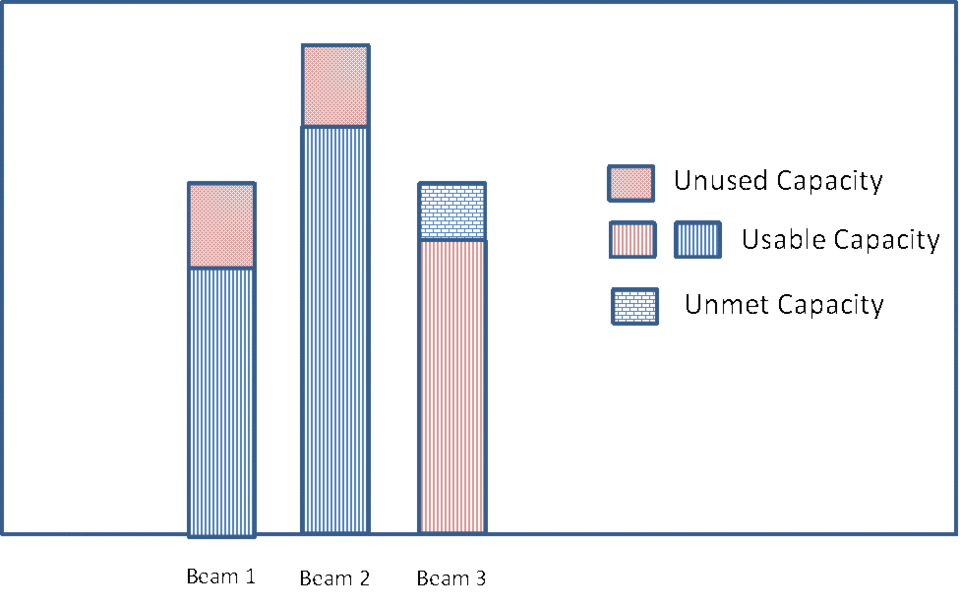Optimised Resource Allocation in Broadband Satellites
| 675 - Abstract: |
| In broadband satellites with multiple spot beams, often the network capacity is not ideally used. Some beams have a complete usage of their capacity, while other beams have a higher capacity than is used. This can consequently lead to a loss of the revenue of the satellite operator, due to lost customers in the filled-up beams and the waste of resources in the other beams. To optimize the resource allocation in the different beams, techniques like flexible power, bandwidth or time allocation are used in the different beams. The proposed invention improves the efficiency of the flexible bandwidth and time allocation techniques. License agreements are sought. |
Description:
The European Space Agency proposes an invention related to a method of controlling the transmission of signals in a group of beams emitted by a satellite. As shown in Figure 1, some beams have unused capacity and some unmet capacity needs. The waste of capacity and the loss of customers in filled-up beams leads to a smaller revenue of the satellite operator.
The invention foresees to improve the efficiency of the flexible bandwidth and flexible time allocation techniques by mitigating the co-channel interference, which can occur. This allows the two flexible methods to meet the capacity demand distribution more efficiently. The offered capacity is not only higher, but also more predictable.
To implement the invention, the European Space Agency proposes two different interference mitigation techniques in combination with the flexible bandwidth or time allocation. Precoding at the gateway is used to pre-cancel co-channel intra-system interference by applying a linear combination of the transmitted signals over the different beams. The second interference mitigation techniques is multi-user detection at the user terminal. Hence, the main signal and the interferences are both detected at the user terminal.
Innovations and advantages:
The invention advantageously combines a flexible capacity allocation for satellite beams with interference mitigation techniques. Using the technology has the following advantages:
- More efficient match of capacity demand distribution over satellite coverage,
- Overall offered capacity higher and more predictable,
- More users on a satellite,
- Commercial potential with higher revenues for broadband satellite operators.
Domain of application:
The invention is of high interest for telecommunication. Especially, satellite operators can use the invention advantageous to increase their revenues.





